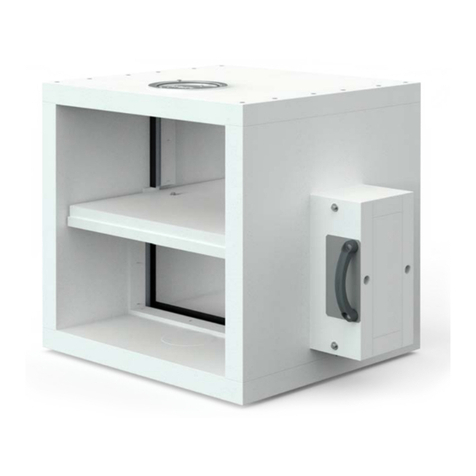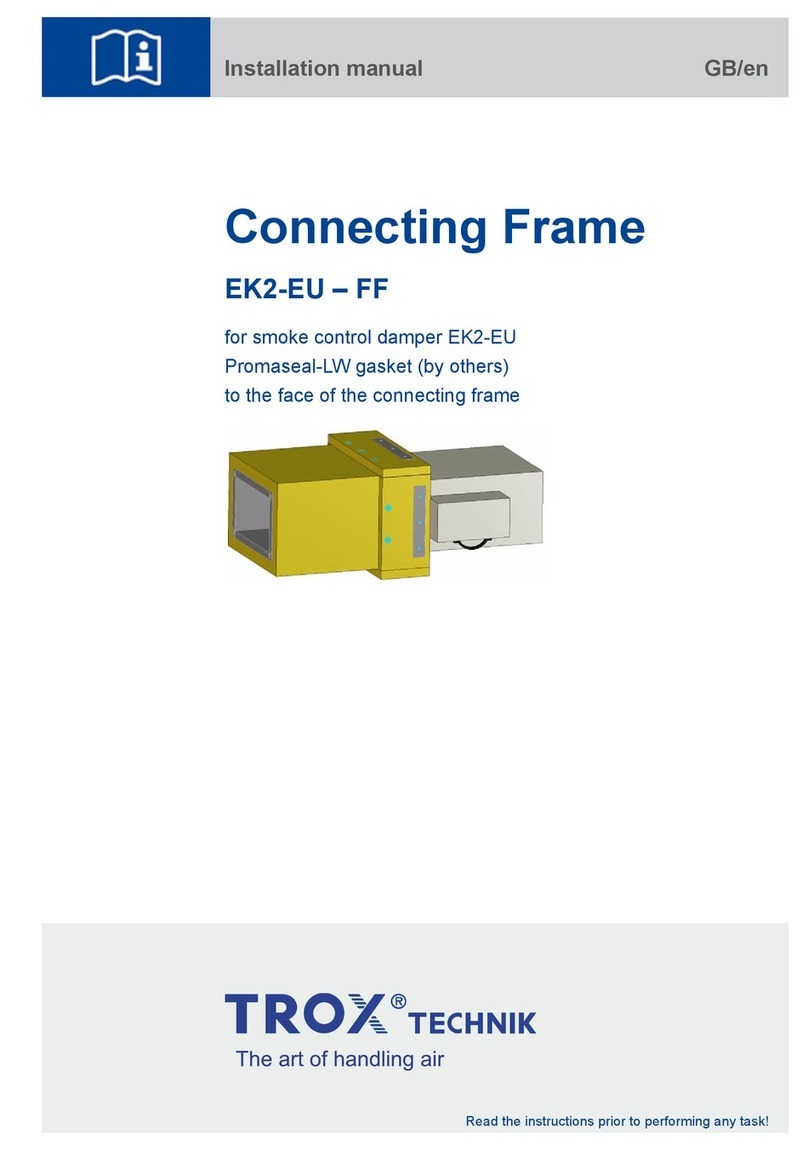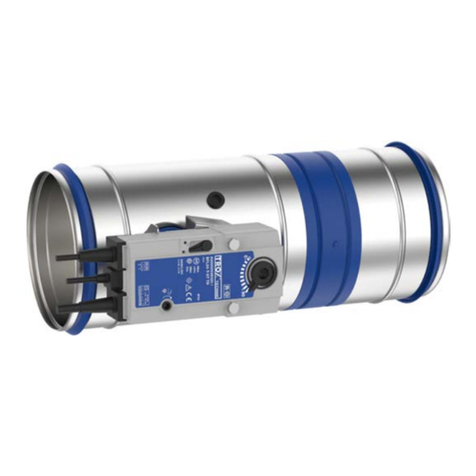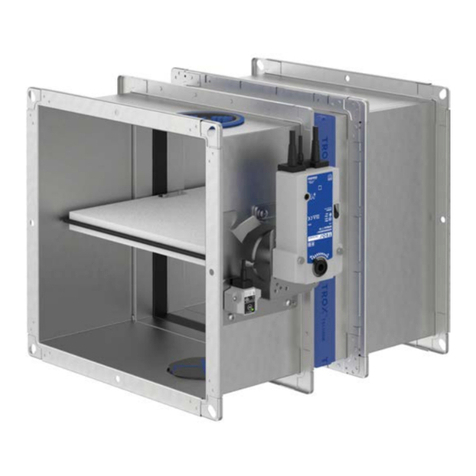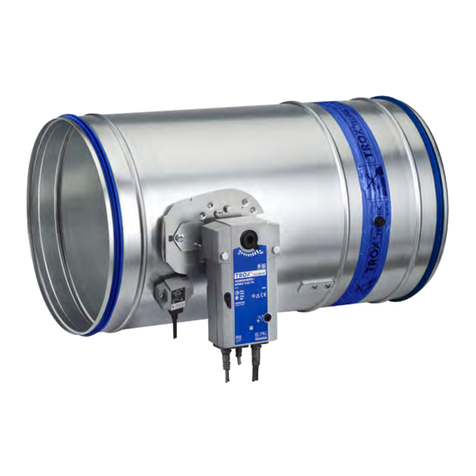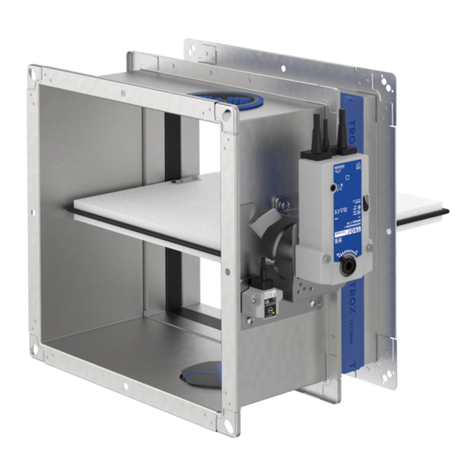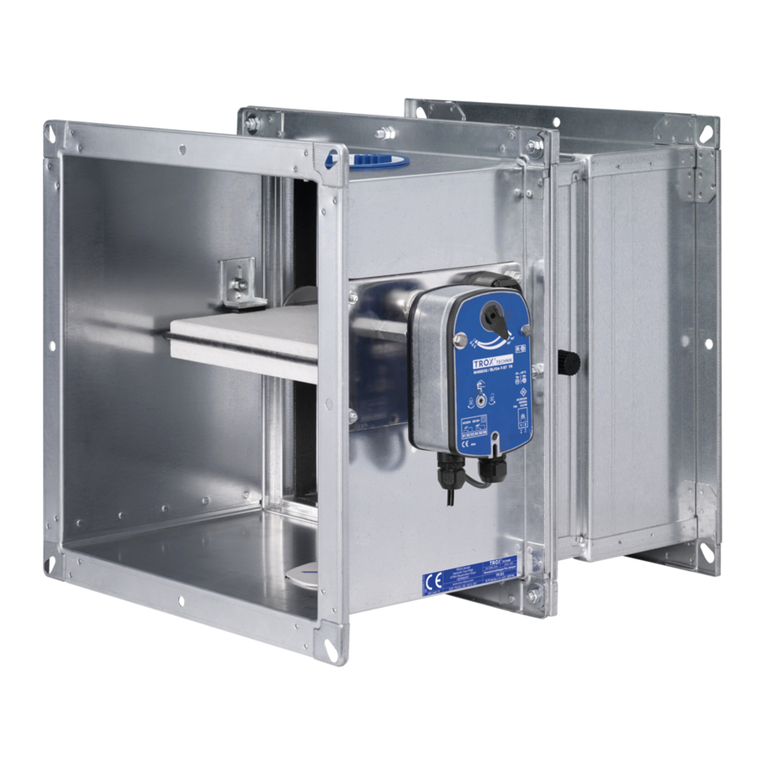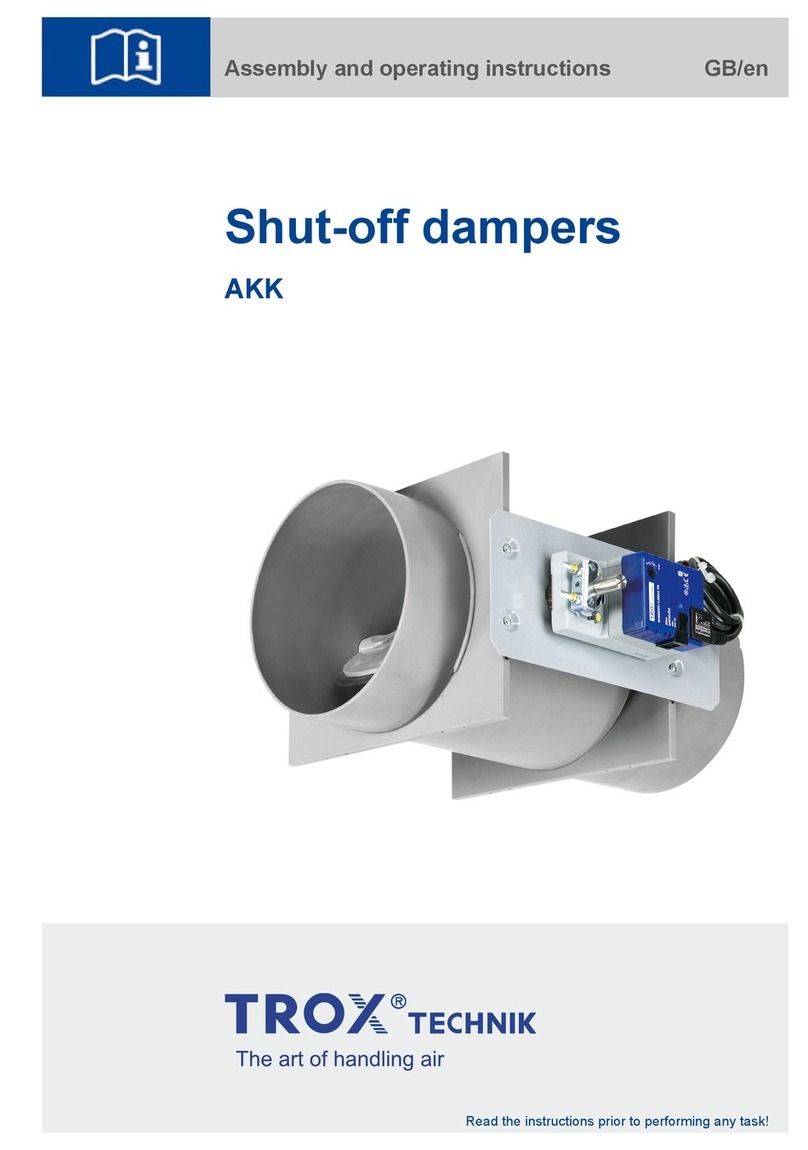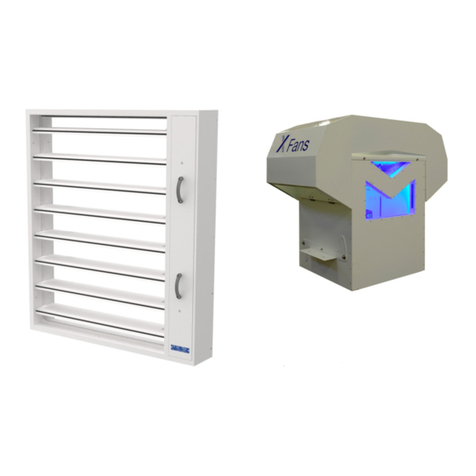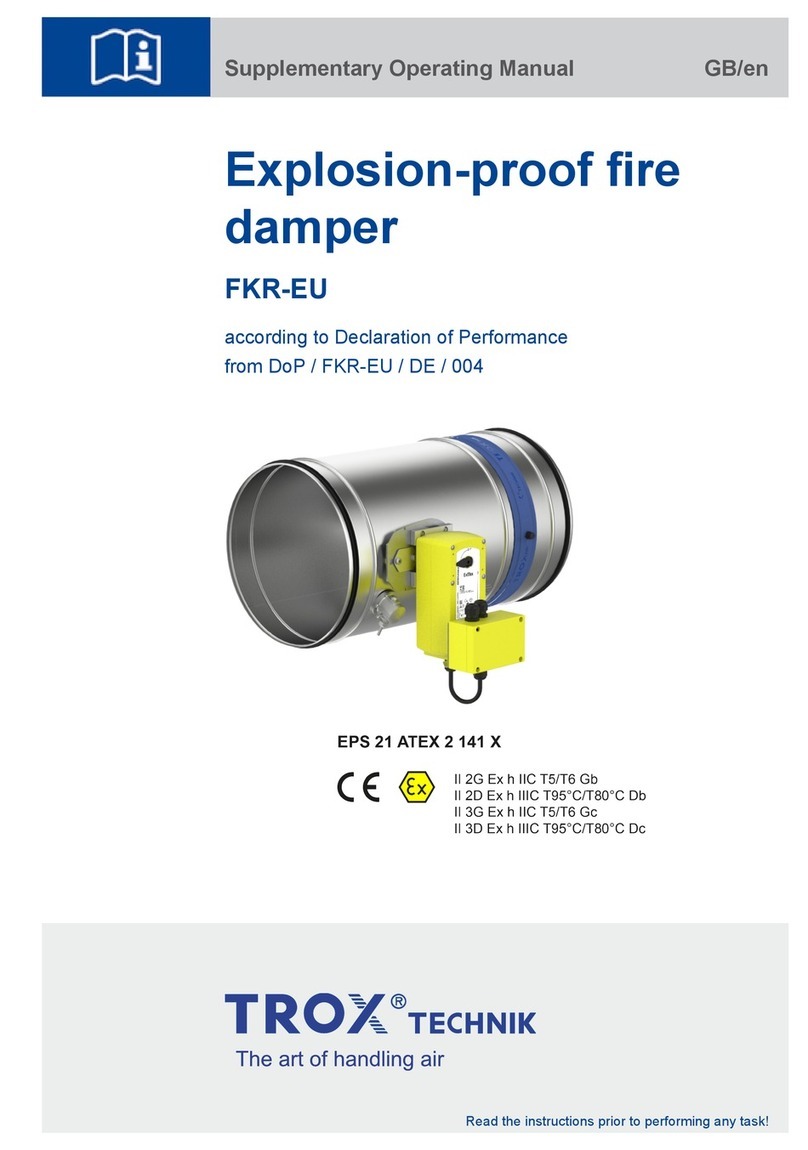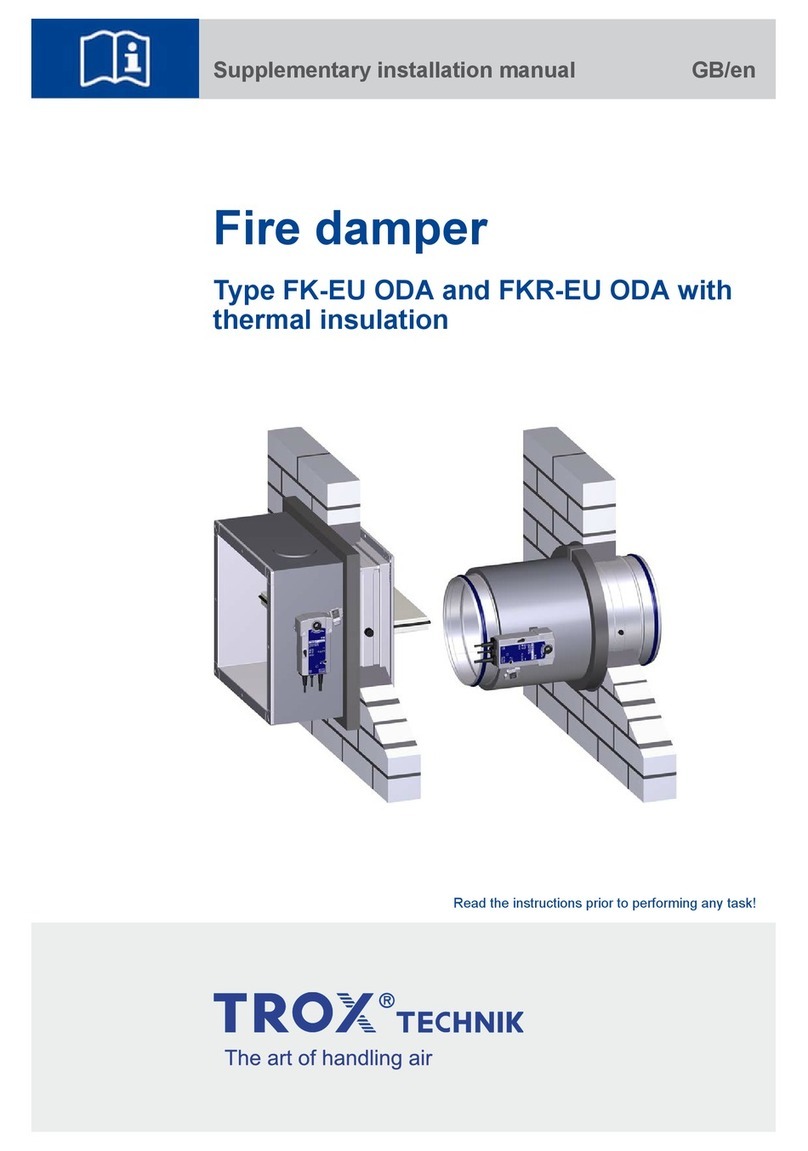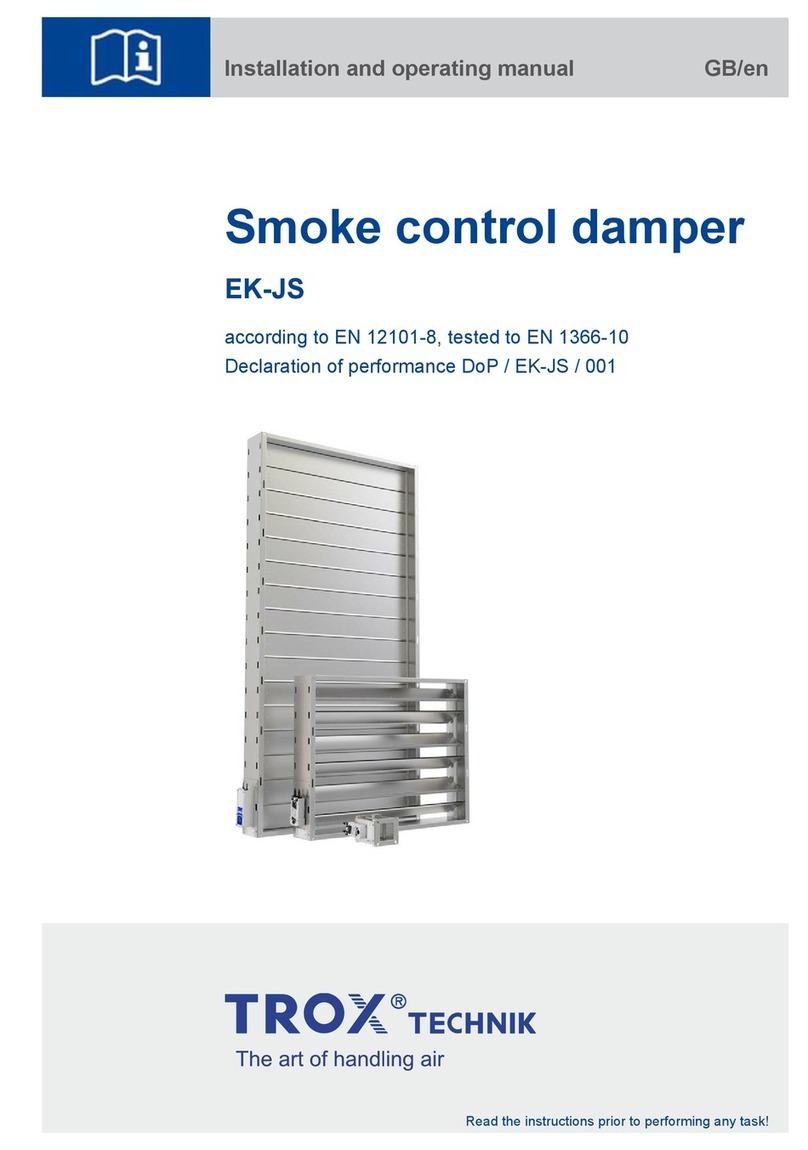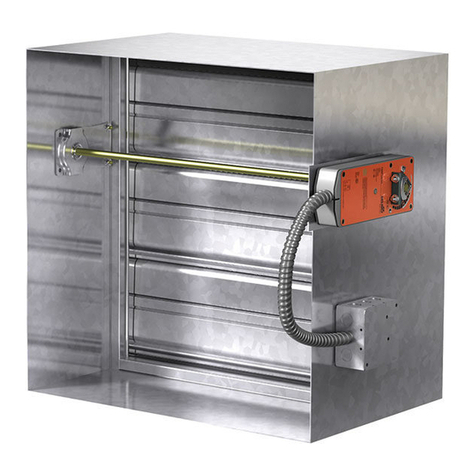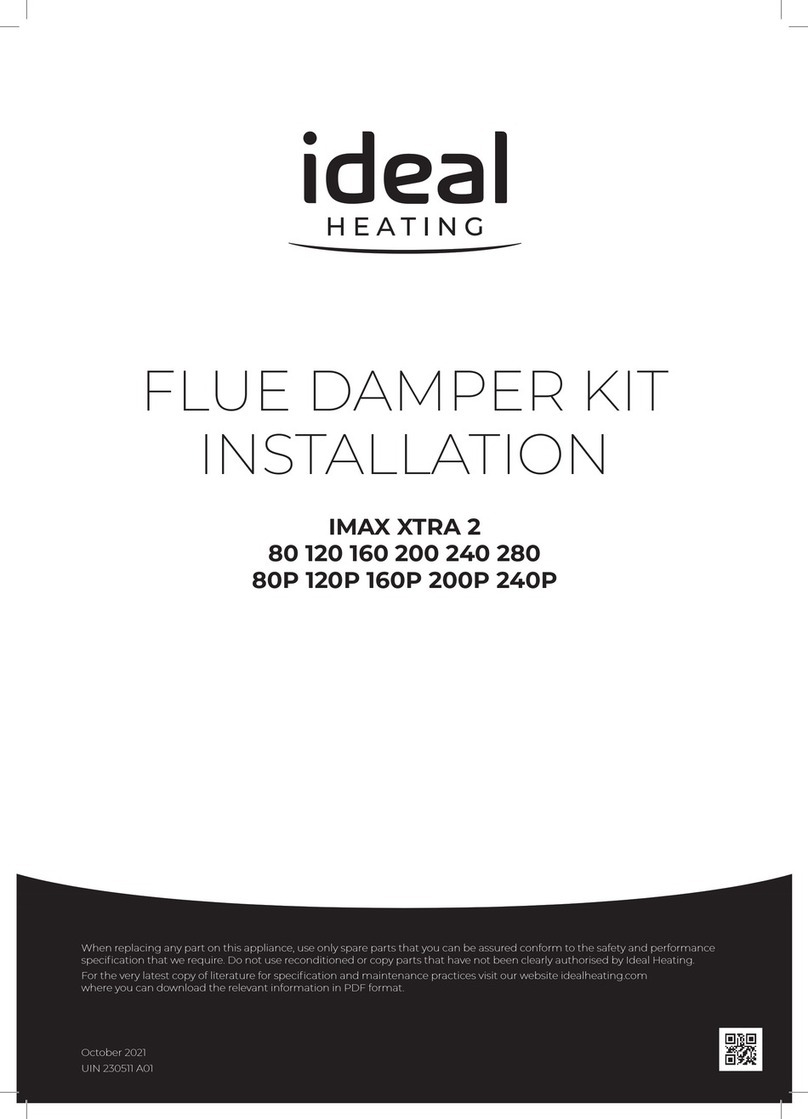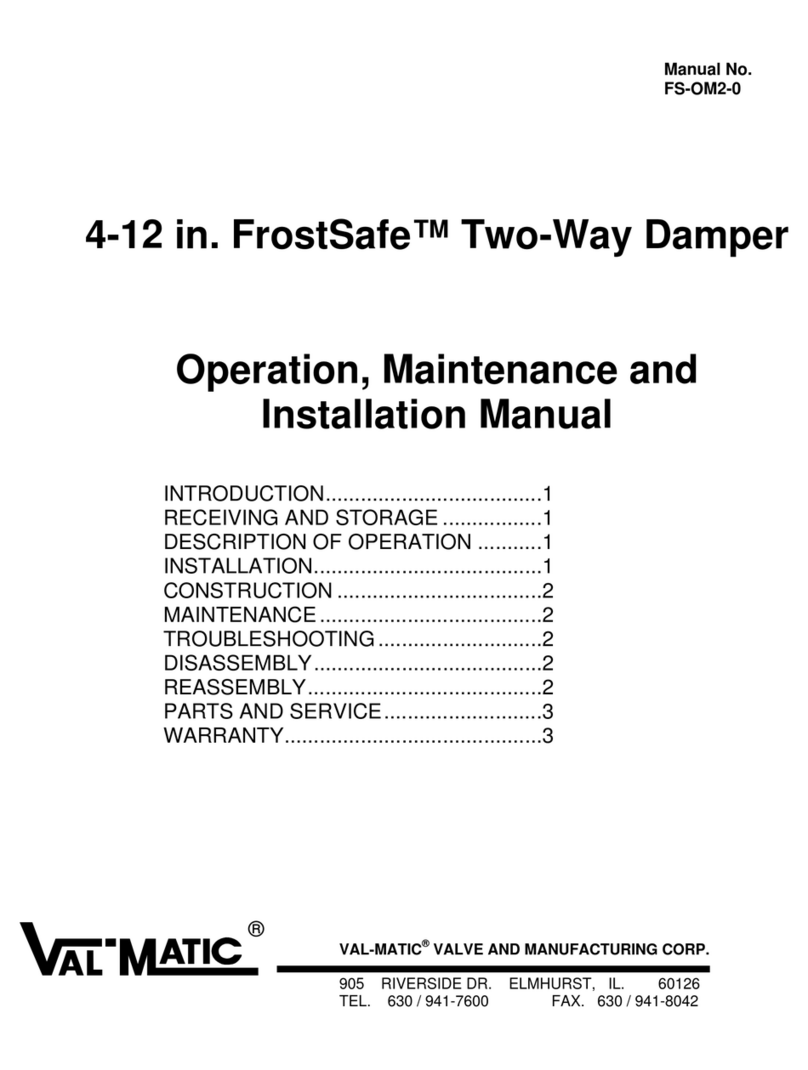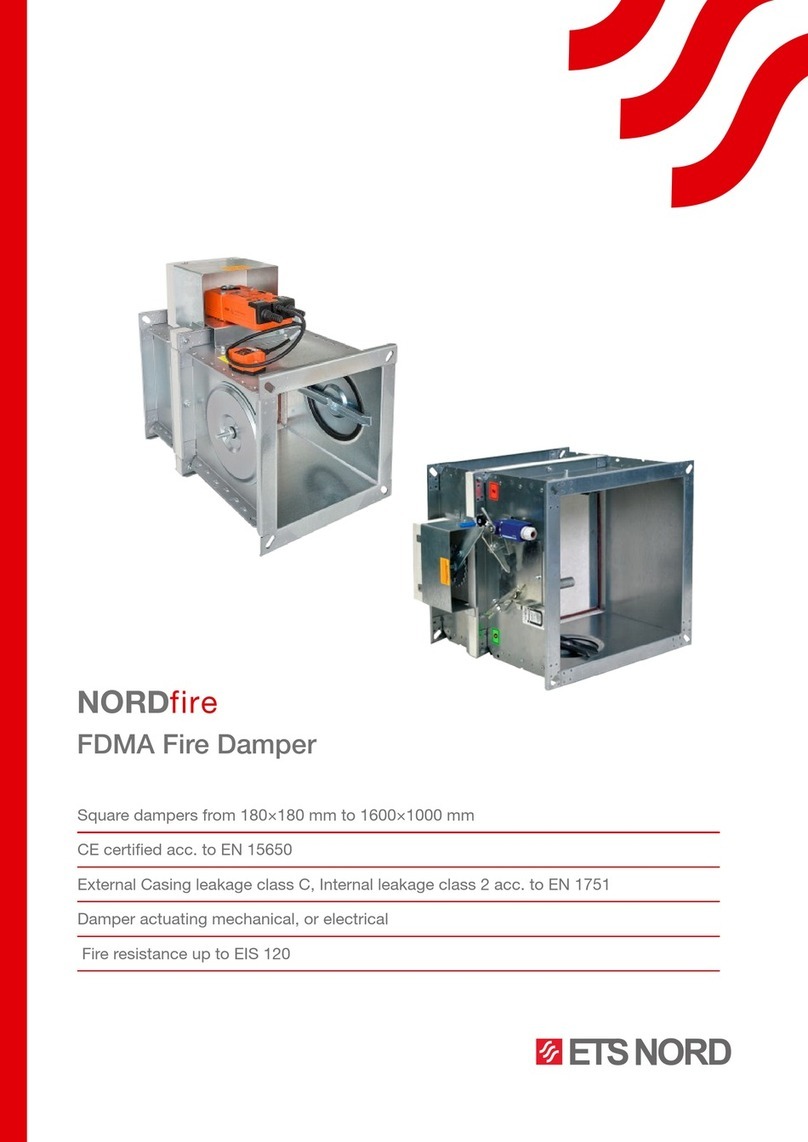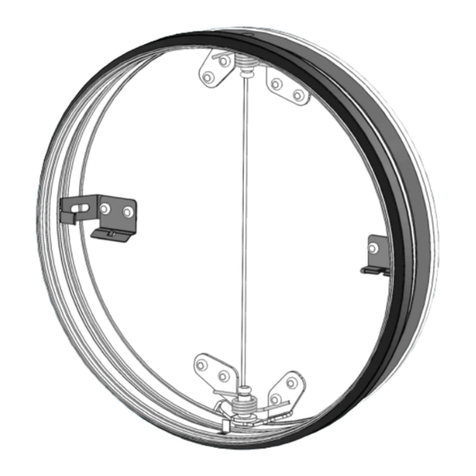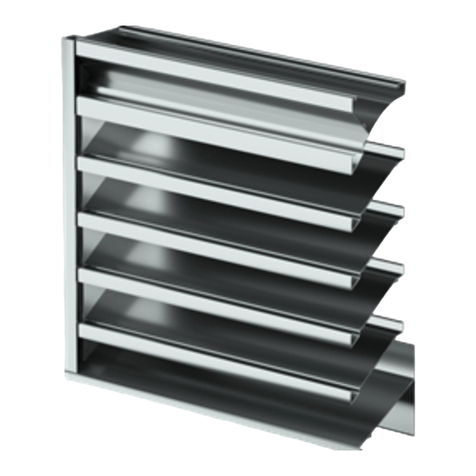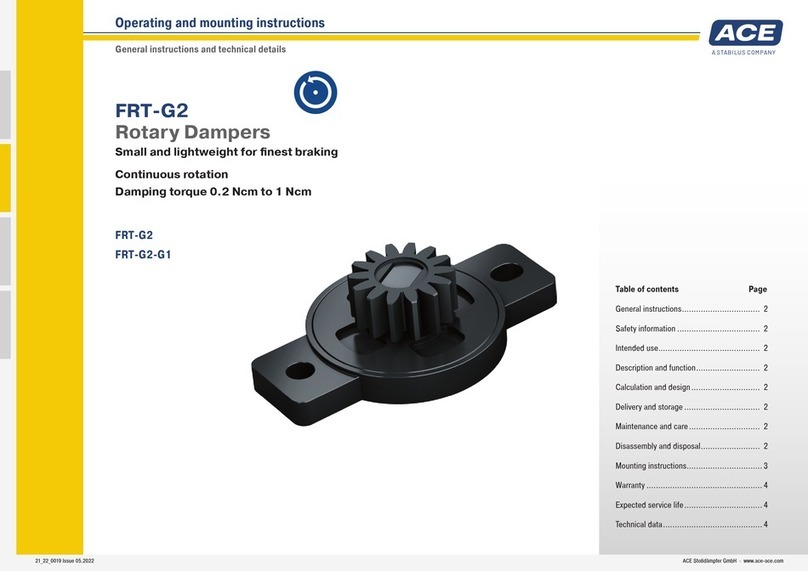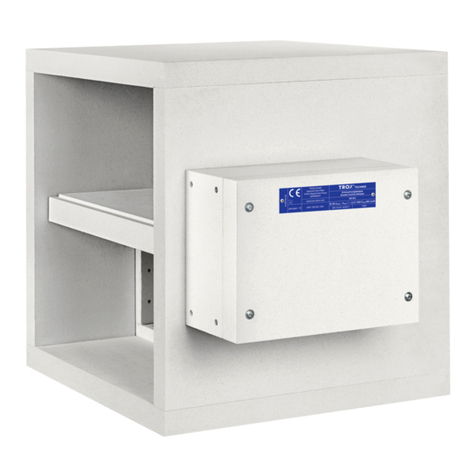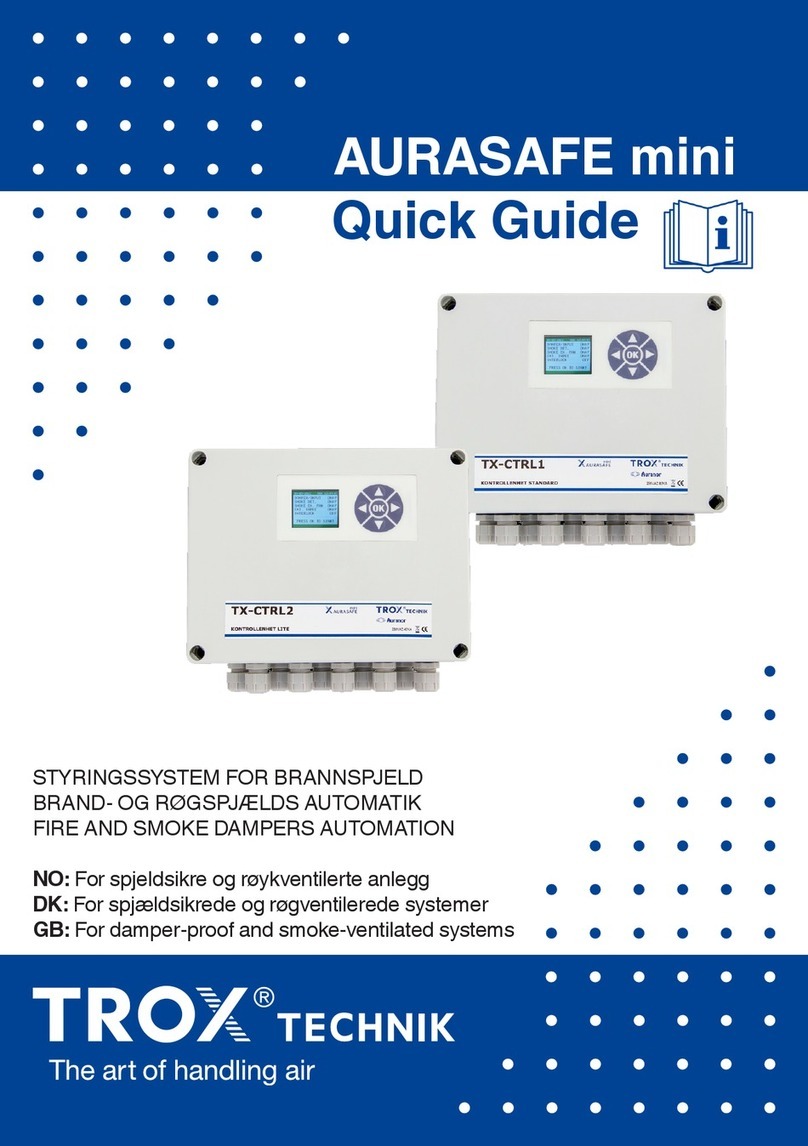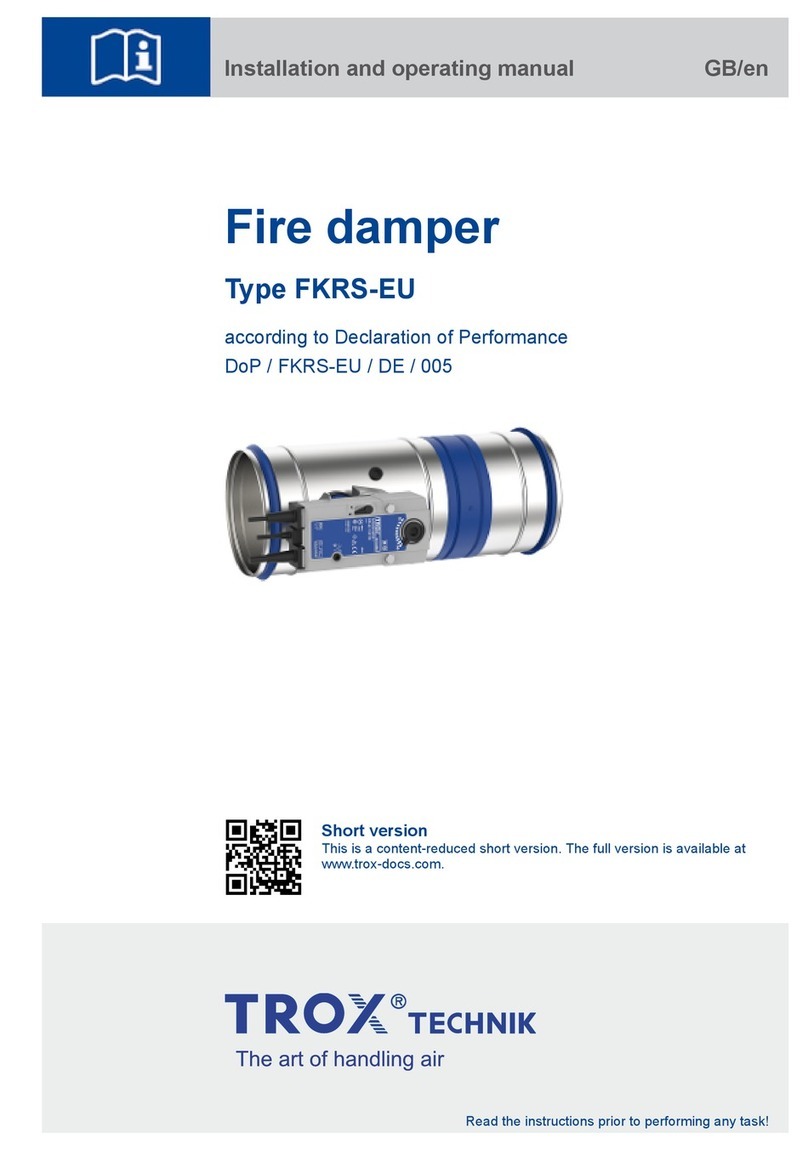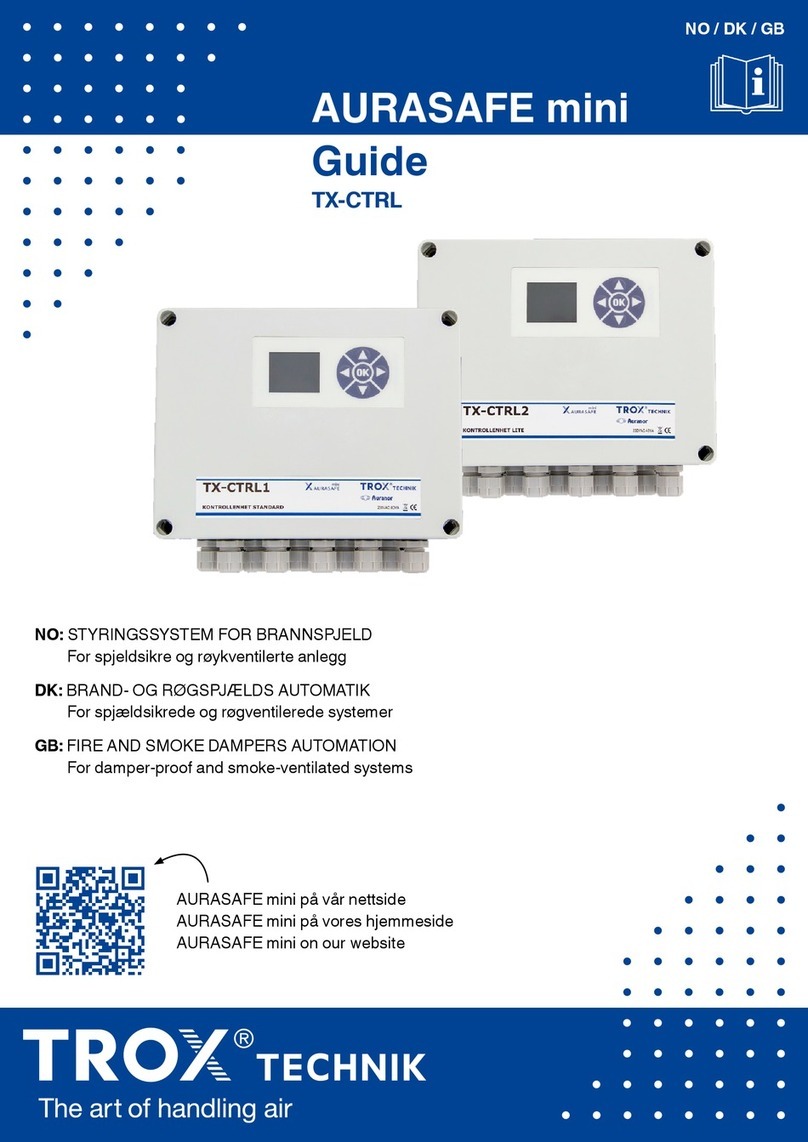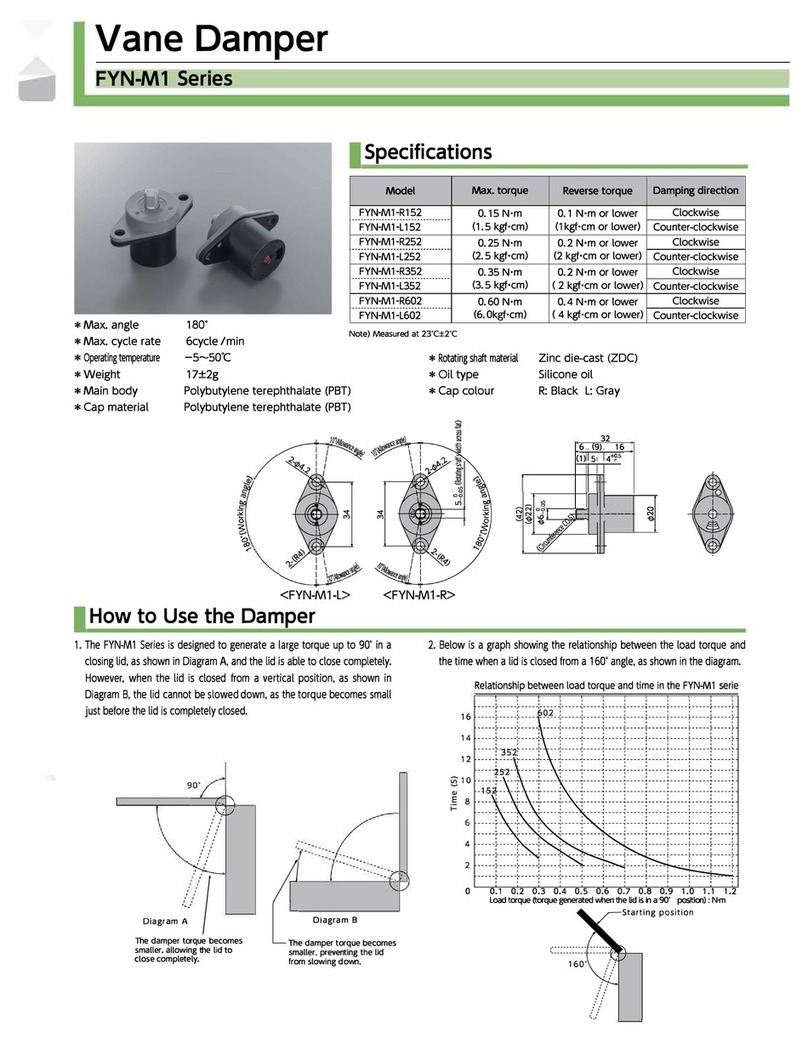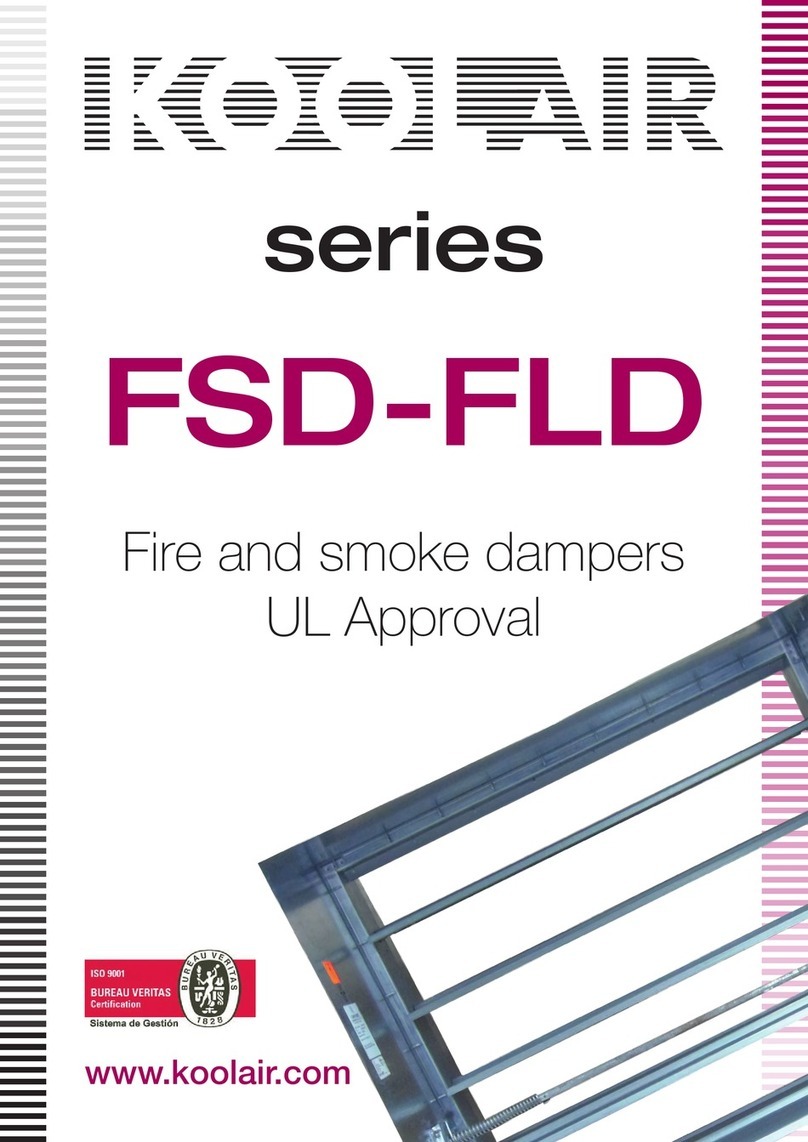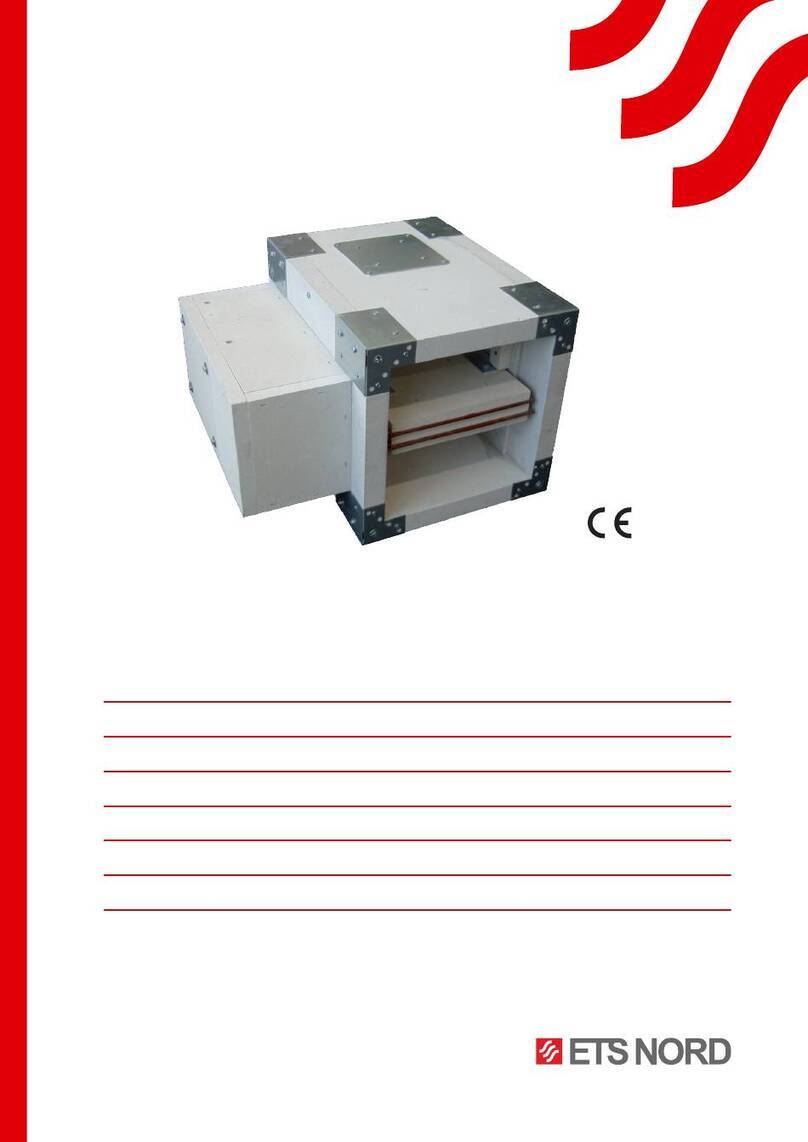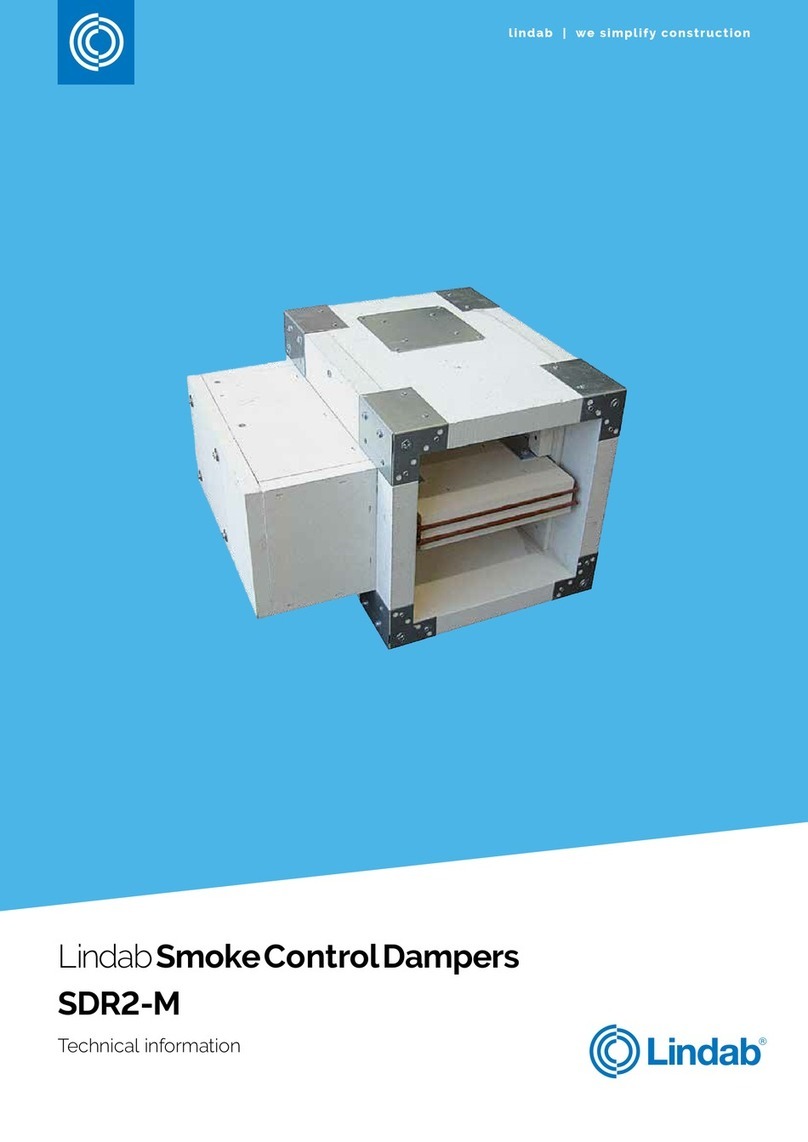
Fire dampers
General information
06/2016
FK-EU
– DE/en
1Application
– TROX fire dampers of Type FK-EU, with CE
marking and declaration of performance, for
the isolation of duct penetrations between fire
compartments in the event of a fire
– To prevent the propagation of fire and smoke
through ductwork to adjacent designated fire
compartments
Classification
– Class of performance to EN 13501-3, up to
EI 180 (ve, ho,i↔o)S
Variants
– With fusible link
– With fusible link for use in potentially explosive
atmospheres
– With spring return actuator
– With spring return actuator for use in potentially
explosive atmospheres
– With spring return actuator and duct smoke
detector
– With spring return actuator, duct smoke
detector and cover grilles on both ends for use
as an air transfer opening, with general building
inspectorate licence Z-6.50-2031
Nominal sizes
– B × H: 200 × 200 – 1500 × 800 mm (in
increments of 1 mm))
– L: 375 mm or 500 mm
Attachments*
– Limit switch for damper blade position
indication
– Limit switch for damper blade position
indication for use in potentially explosive
atmospheres
– Spring return actuator for 24 V AC/DC or
230 V AC supply voltage
– Spring return actuator for 24 – 230 V supply
voltage, for use in potentially explosive
atmospheres
– Network module for the integration with AS-i or
LON networks
– Spring return actuator and pre-wired duct
smoke detector, 24 V or 230 V supply voltage
*All attachments can be retrofitted
Accessories
– Installation kit for installation into solid non-
load-bearing walls with flexible ceiling joint
– Installation kit for dry mortarless installation on
the face of solid walls
– Installation kit for dry mortarless installation
adjacent to solid walls
– Installation kit for dry mortarless installation
remote from solid walls and ceiling slabs
– Installation kit for dry mortarless installation in
lightweight partition walls or fire walls with
metal support structure and cladding on both
sides
– Installation kit for dry mortarless installation into
shaft walls with or without metal support
structure but with cladding on one side
– Installation kit for dry mortarless installation into
timber stud walls and half-timbered
constructions
– Installation kit for installation into lightweight
partition walls or fire walls with flexible ceiling
joint
– Flexible connectors
– Cover grille
– Circular spigots
Useful additions
– Duct smoke detector RM-O-3-D
– Duct smoke detector with airflow monitor RM-
O-VS-D
Special characteristics
– Declaration of performance according to
Construction Products Regulation
– Classification to EN 13501-3, up to EI 180
(ve, ho,i↔o)S
– Building inspectorate licence Z-56.4212-991
for fire resistance properties
– Complies with the requirements of EN 15650
– Tested to EN 1366-2 for fire resistance
properties
– Hygiene complies with VDI 6022 part 1 (07/
2011), VDI 3803 (02/2010), DIN 1946 part 4
(12/2008), and EN 13779 (09/2007)
– Corrosion protection according to EN 15650 in
connection with EN 60068-2-52
– Closed blade air leakage to EN 1751, class 2
– Casing air leakage to EN 1751, class C; (B + H)
≤700,classB
– Low differential pressure and sound power
level
– Any airflow direction
– Integration into the central BMS with
TROXNETCOM
Parts and characteristics
– Explosion-proof constructions for zones 1, 2,
21, 22
– Release temperature 72 °C or 95 °C (for use in
warm air ventilation systems)
– Single-handed operation
Construction features
– Rectangular or square construction, rigid
casing, both flanges with fixing holes
– Suitable for the connection of ducts, spigots,
flexible connectors or a cover grille
– The release mechanism is accessible and can
be tested from the outside
– Two inspection access panels, Ø110 mm,
which can be opened without any tools
– Remote control with spring return actuator
Materials and surfaces
Casing:
– Galvanised sheet steel
– Galvanised sheet steel, powder-coated
RAL 7001
– Stainless steel 1.4301
Damper blade:
– Special insulation material
– Special insulation material with coating
K4 – 1.1 – 4
Description
Fire damper Type FK-EU
For detailed information
on attachments see
Chapter K4 – 1.2.




















